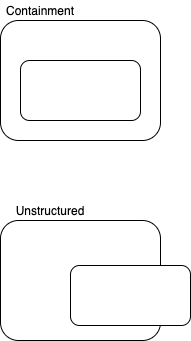The Humane Programming Language
Spectrum of Languages
Broadly, there are two extremes in programming language design:
- end-user-oriented - “humane” from the end-users’ perspective, but, theoretically unsound
- theoretically-oriented - self-consistent, but “inhumane” from the end-users’ perspective
What is the middle ground?
We need a version of The Humane Interface for programming language design.
Programming Languages Are IDEs
The goal of programming is to control the operation of a machine.
Programming languages are simply IDEs for programming machines.
λ Calculus
A concrete example of (2) - theoretically sound, but, inhumane, programming language is the λ Calculus.
The following is reverse in λ Calculus1 :
λa.a(ω(λbcde.d(bb)(λf.fce)))⊥
(This becomes even harder to read when De Bruijn indexing is used).
Clearly, one wouldn’t expect spreadsheet users to use λ Calculus instead of the high-school math functions that they are used to.
Question
So, what is the “science” behind wrapping theoretically-sound operations in sugar-coated syntax that makes for a “good” programming language?
Problem Space
Firstly, it depends on the problem space. Spreadsheet users want “simple to use” functions. They don’t want to see the power of λ Calculus or the power of Python.
One Language To Rule Them All - NOT
I argue that there can be no one programming language that will satisfy everone.
General purpose programming languages are dead to me.
Implications
The implication is that we need tools to help us build lots of programming languages, and, we need tricks to make the act of building languages proceed more quickly.
PEG
PEG2 - Ohm-JS - is a step in that direction.
Humane Interface For Programming Languages
We need to explore / characterize what end-users think is simple.
Simplicity, Complexity
Simplicity is defined as “lack of nuance”.
How can we hide/elide nuance without removing nuance?
Layers
We need to employ layered design.
Layers are infinitely recursive.
It is not good enough to think in terms of only two (2) layers
- high-level vs. low-level
- compile-time vs. runtime.
Syntax
End-users often use diagrams - e.g. whiteboards and paper.
Our programming languages are relegated to being text-only3.
Containment
People think in terms of containers - dolls nested within dolls.
Containment is easy to express on diagrams.
Containment is less-easy to express in text. We have spent decades crawling out of the hole created by our use of text-only languages (Structured Programming, Global-vs-scoped variables, OO, λ Calculus, namespaces, etc., etc.).
Containment Diagram

Containment Text
{
var x;
}
Note that if var x appears outside of the braces, the variable x is no longer contained.
It happens so often that we’ve given this condition a special name - global variable.